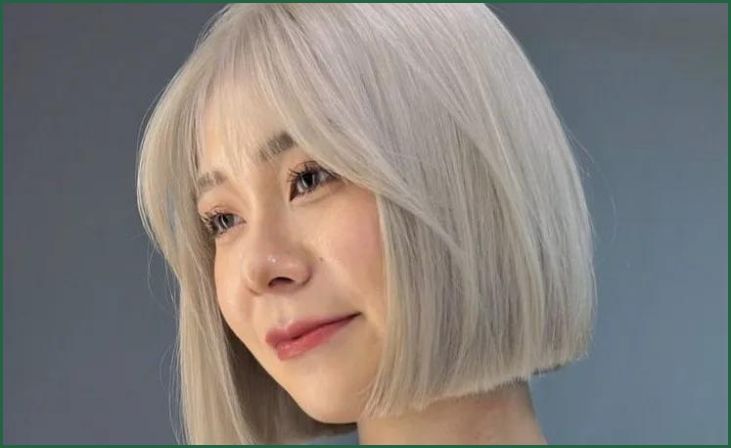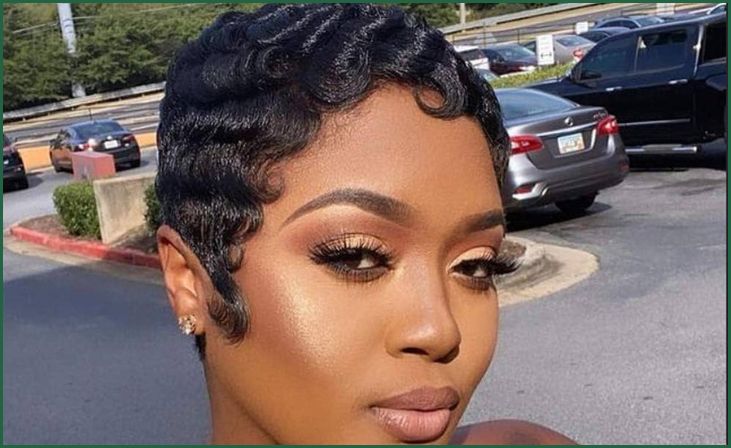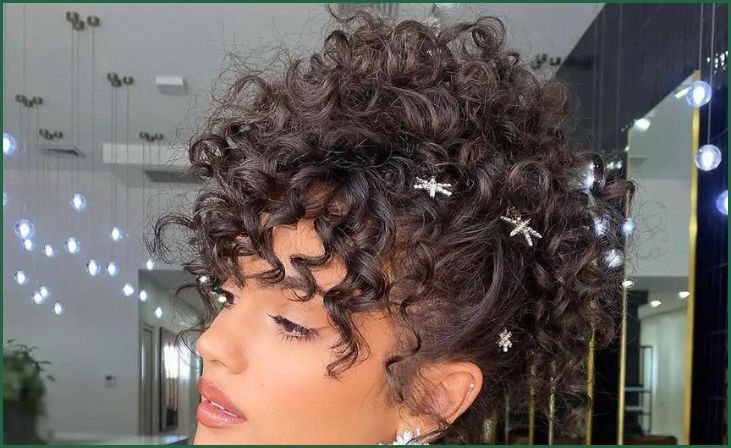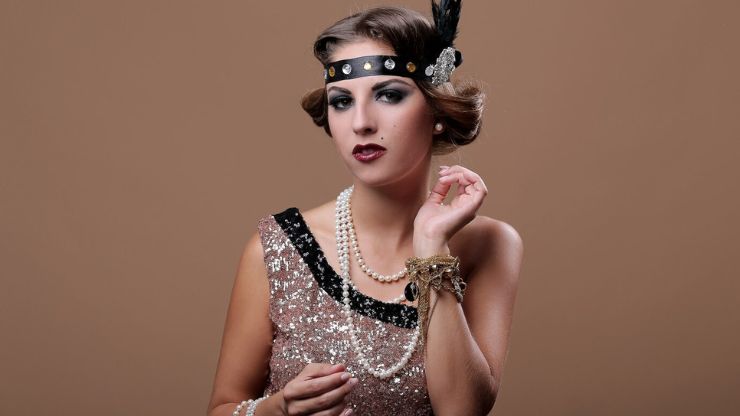Vintage Glam Looks – The 1920s, often hailed as the Roaring Twenties, was a transformative era that left an indelible mark on fashion and culture. Amidst the jazz-filled nights and the exuberance of the flapper spirit, hairstyles played a pivotal role in defining the distinct aesthetic of the time.
This period witnessed a departure from traditional norms, with women embracing shorter and more daring styles. The iconic bob cut, epitomized by figures like Louise Brooks, symbolized the era’s bold and rebellious spirit. From the elegant finger waves to the androgynous Eton crop, each hairstyle told a story of liberation and self-expression.
Join us as we explore the top 9 vintage glam looks of the 1920s, each a testament to an era that celebrated individuality and laid the groundwork for modern hairstyling trends.
Table of Contents
ToggleImportance of hairstyles in defining the era’s aesthetic
Hairstyles in the 1920s held a profound significance in shaping and reflecting the era’s aesthetic. The transformative shift in societal norms, characterized by the Jazz Age and the emergence of the flapper culture, found its expression in the daring and unconventional hairstyles of the time. The iconic bob cut, with its shortened length and sharp lines, symbolized a break from traditional gender roles and a rejection of Victorian-era constraints.
These hairstyles were more than mere fashion statements; they were visual declarations of a newfound sense of freedom and modernity. The bob, flapper looks, finger waves, and other styles became symbols of the progressive, liberated spirit that defined the 1920s.
In an era marked by cultural upheaval, economic prosperity, and the pursuit of pleasure, hairstyles became a canvas for self-expression, challenging societal norms and contributing significantly to the overall aesthetic of the Roaring Twenties. These trends not only reflected the changing times but also influenced and inspired future generations of fashion and beauty standards.
Also, Read – Reasons Hair Dyes Cause Hair Loss or Thinning
Top 10 Vintage Glam Looks
The Bob

The iconic 1920s bob was a revolutionary statement, embodying the liberated spirit of flapper fashion. This short, straight haircut symbolized a break from traditional long hairstyles, signifying women’s newfound independence.
Characterized by its simplicity and chic demeanor, the bob framed the face elegantly and became synonymous with the audacious style of the Roaring Twenties.
From glamorous Hollywood stars to everyday flappers, the bob’s popularity soared, leaving an indelible mark on the fashion landscape of the era.
Finger Waves

Finger waves, a hallmark of 1920s glamour, epitomized the era’s chic sophistication. This hairstyling technique involved creating sculpted, S-shaped waves close to the scalp, exuding an air of elegance and refinement.
Popularized by flapper fashion, finger waves complemented both short and medium-length hair, providing a glamorous touch for special occasions. Achieved by molding hair with fingers, combs, and styling products, this iconic look adorned the heads of fashionable women, leaving a lasting impression on the Jazz Age aesthetic.
Finger waves were a visual embodiment of the era’s shift towards modernity and the bold, expressive spirit of the time.
The Marcel Wave

The Marcel wave, a distinctive 1920s hairstyle, showcased deep, defined waves that added an air of sophistication to the flapper look. Named after the Marcel iron used in its creation, this style featured elegantly sculpted, ribbon-like waves, often worn with a side part for a classic touch.
Popularized by celebrities of the Roaring Twenties, the Marcel wave became synonymous with the glamorous and avant-garde spirit of the era.
This iconic hairstyle reflected the period’s embrace of modernity and marked a departure from more traditional hair trends, capturing the essence of the bold and dynamic Jazz Age fashion.
Also, Read – Dark Hair with Highlights & Balayage
Cloche Hat Hairstyle

The Cloche Hat Hairstyle epitomized 1920s fashion, where hair was tailored to complement this iconic hat. This style featured short, close-cropped hair with gentle waves, allowing the snug-fitting cloche hat to sit stylishly atop the head.
The hat’s brim framed the face, emphasizing the wearer’s eyes and capturing the essence of flapper sophistication. Popularized by the likes of silent film stars, this combination of hat and hairstyle became a symbol of the modern, liberated woman of the Jazz Age.
The Cloche Hat Hairstyle perfectly encapsulated the era’s fusion of fashion and individuality, marking a departure from the elaborate styles of the past.
Don't just scroll, subscribe!
BuzzTrail's unique web-stories are the cure for boredom you've been waiting for.
Eton Crop

The Eton Crop, a daring 1920s hairstyle, was a bold departure from traditional femininity. This extremely short bob exposed the ears, reflecting the avant-garde spirit of the flapper era. Named after the prestigious Eton College in England, known for its short-cropped haircuts, this style was a symbol of rebellion and women’s newfound independence.
Embracing a boyish charm, the Eton Crop challenged conventional beauty standards and became a statement of liberation and modernity. This audacious hairstyle captured the essence of the Roaring Twenties, where women celebrated a departure from societal norms and embraced a more assertive, individualistic approach to fashion and self-expression.
Chignon Bun

The Chignon Bun, a 1920s classic, exuded timeless elegance. Perfect for longer hair, this hairstyle involved gathering the tresses into a low, tight bun at the nape of the neck. Embraced during the Roaring Twenties, the Chignon Bun epitomized sophistication, often adorned with ribbons or jeweled pins for added flair.
Ideal for formal events, this graceful updo complemented the fashionable attire of the era. The Chignon Bun showcased a blend of practicality and style, offering a polished and refined look that contributed to the overall charm of 1920s fashion. Its enduring appeal continues to inspire elegant hairstyles today.
Victory Rolls

Victory Rolls, iconic in 1940s pin-up culture, drew inspiration from 1920s glamour. These voluminous curls, framing the face with flair, originated from the inventive spirit of the Jazz Age. The Rolls, characterized by their structured waves, exuded a playful yet sophisticated charm.
Popularized during wartime, Victory Rolls became a symbol of resilience and feminine strength. Embracing a fusion of eras, this hairstyle captured attention with its bold curls, adding a touch of vintage allure.
Beyond being a nod to the past, Victory Rolls remain a timeless and empowering style, celebrated for their unique blend of glamour and individuality.
Curled and Pinned Updos

Curled and Pinned Updos, quintessential to 1920s elegance, showcased intricate hairstyles that defined the era. With meticulous curls and strategic pinning, women achieved elaborate updos that exuded sophistication.
This style, often seen at formal gatherings, epitomized the glamorous spirit of the Jazz Age. The combination of curls and carefully placed pins created a sense of artistry, elevating the updo into a statement of refined fashion.
Whether adorned with accessories or left gracefully simple, these updos represented the bold departure from Victorian norms, embracing a more liberated and modern approach to hairstyling that characterized the flapper era.
Headbands and Hair Accessories

Headbands and hair accessories were integral to 1920s fashion, adding a touch of flair and femininity to hairstyles. Women adorned their short bobs or longer locks with embellished headbands featuring feathers, jewels, or fabric flowers.
These accessories became iconic symbols of the Jazz Age, accentuating the carefree spirit of the flapper era. Whether worn across the forehead or placed to the side, these accessories complemented the chic and daring hairstyles of the time.
Headbands and hairpieces were not just functional but served as stylish statements, reflecting the dynamic shift in societal attitudes and the celebration of newfound freedom and self-expression during the Roaring Twenties.
Shingle Cut

The Shingle Cut, a bold 1920s hairstyle, revolutionized the traditional bob. Featuring short, tapered layers at the back that gracefully descended towards the neck, the Shingle Cut added texture and modernity to women’s hair.
This avant-garde look challenged conventions and embodied the free-spirited flapper attitude of the Jazz Age. With its distinctive shape and dynamic lines, the Shingle Cut became a symbol of the era’s departure from Victorian norms, embracing a more daring and liberated approach to fashion.
This daring haircut marked a significant moment in hairstyling history, reflecting the evolving societal landscape and the bold, progressive spirit of the Roaring Twenties.
Conclusion
In conclusion, the 1920s hairstyles remain timeless symbols of bold individuality and cultural transformation. From the iconic bob to the daring flapper looks, these styles encapsulate the era’s rebellious spirit.
As we continue to draw inspiration from the past, the enduring influence of these vintage glam looks resonates in contemporary fashion, reminding us of a time when hairstyles were not just trends but powerful expressions of societal shifts and personal freedom.
The 1920s hairstyles stand as a testament to the resilience of style as a form of cultural reflection and self-affirmation, leaving an indelible mark on the tapestry of fashion history.
FAQs
Who popularized the bob cut in the 1920s?
Who popularized the bob cut in the 1920s?
The bob cut gained popularity in the 1920s and was notably associated with iconic figures like Louise Brooks, a silent film actress whose signature blunt bob became synonymous with the Roaring Twenties.
What is the flapper look, and how did it influence hairstyles?
What is the flapper look, and how did it influence hairstyles?
The flapper look was a rebellious and liberated style embraced by women in the 1920s. It featured short, sleek hairstyles that complemented the flapper fashion, symbolizing a break from traditional norms.
How were finger waves achieved in 1920s hairstyles?
How were finger waves achieved in 1920s hairstyles?
Finger waves were achieved by molding wet hair with the fingers into “S” shaped waves and securing them until dry. This technique created elegant, structured waves popular in the 1920s.

